thunderheart
100 W
Hi guys! I've tested two high capacity 21700 cells - LG M50 (5000mAh) and Samsung 48G (4800mAh). The latter i had already tested before and the re-testing of another cell showed almost no difference with previous test results. The M50 is a new cell which is being sold as 10A one, but in its datasheet the maximum discharge current is mentioned as 7.28A. Nevertheless i've also discharged it at 10A to look at it's behavior.
The cells i've bought from Queen Battery.
As always, I've tested with ZKETECH EBC-A20 and a self-made battery holder. It's a PC-connected battery tester supporting 4-wire measuring and discharging at up to 20A.

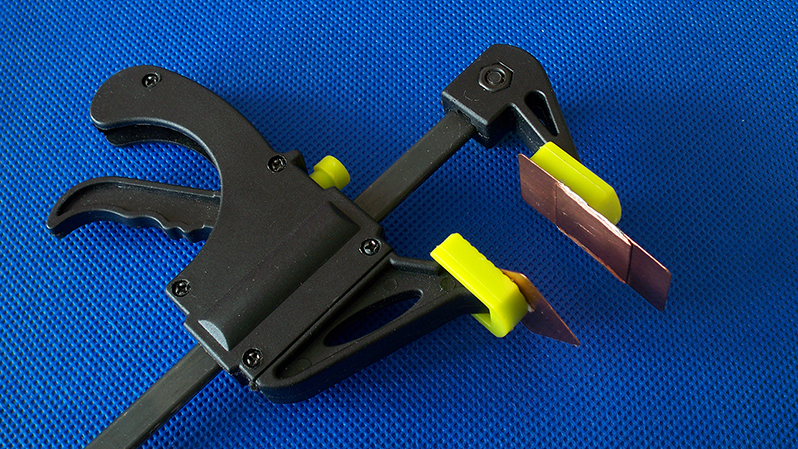
I've followed all the prescriptions of the IEC61960-2003 standard concerning battery's capacity measurement. Before each discharging cycle each battery was charged at standard current mentioned in its datasheet to charge end voltage (4.2V) (cut-off at 0.1A, which is the lowest supported by EBC-A20). Before each discharging or charging i've held a 1-1.5hrs pause. The environment temperature was about 25°C.
LG INR21700 M50 (Grade B)
This cell has absolutely no marking.
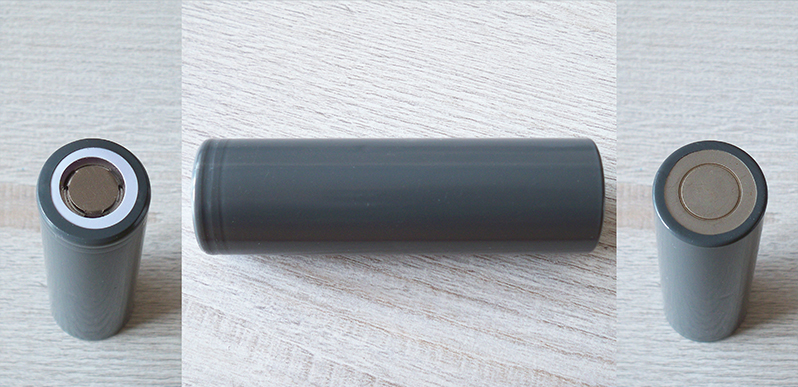
The main specs from its datasheet:
Nominal energy: 18.20Wh
Minimum energy: 17.60Wh
Minimum capacity: 4850mAh
Nominal voltage: 3.63V
Standard charge current: 1.455A
Max. charge current: 3.395A
Charge end voltage: 4.2V
Charge cut-off current: 50mA
Max. discharge current: 7.275A
Discharge cut-off voltage: 2.5V
Weight (w/o washer): 68±1g
The measured weight is 69.16g.

Test results:
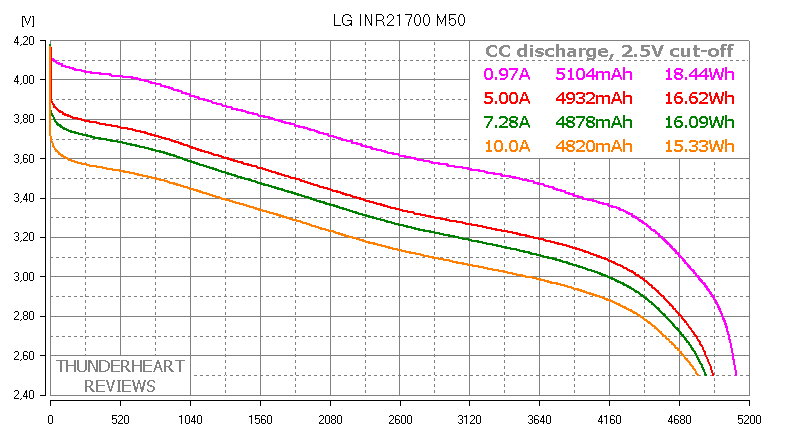
Great results - 5104mAh/18.44Wh at 0.2C (0.97A) and almost 5000mAh at 5A! Even at 10A, which is way above the declared maximum (7.28A), the M50's curve looks very nice. I think it's a very capable cell and LG shouldn't limit the discharge current by 7,28A.
Samsung INR21700-48G
This guy is marked as INR21700-48G SAMSUNG SDI M5-1.
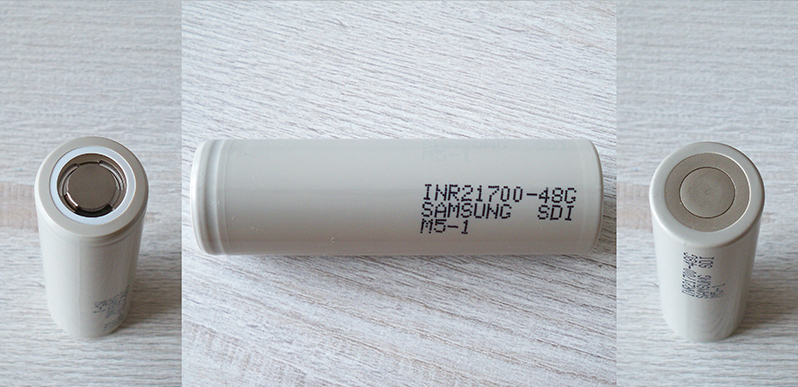
The main specs from its datasheet:
Typical energy: 17.4Wh
Minimum energy: 17.04Wh
Typical capacity: 4800mAh
Minimum capacity: 4700mAh
Nominal voltage: 3.6V
Standard charge current: 1.44A
Max. charge current: 4.8A
Charge end voltage: 4.2V
Charge cut-off current: 96mA
Max. discharge current: 9.6A
Discharge cut-off voltage: 2.5V
Max weight: 69g
The measured weight is 67.58g.
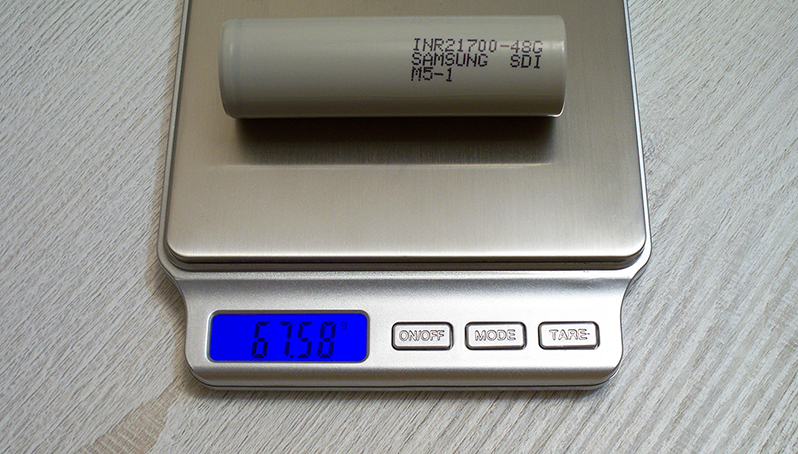
Test results:
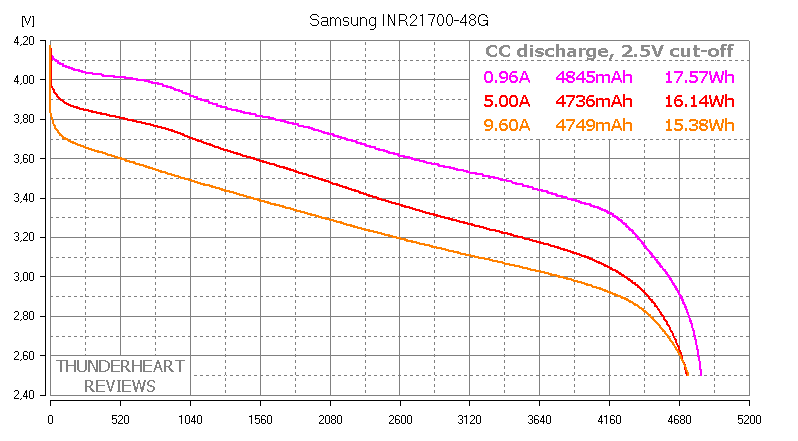
At 0.2C (0.96A) the results are a bit higher than declared. At 5A and 9.6A the 48G showed good results with nice curves.
COMPARISON
At 0.2C.
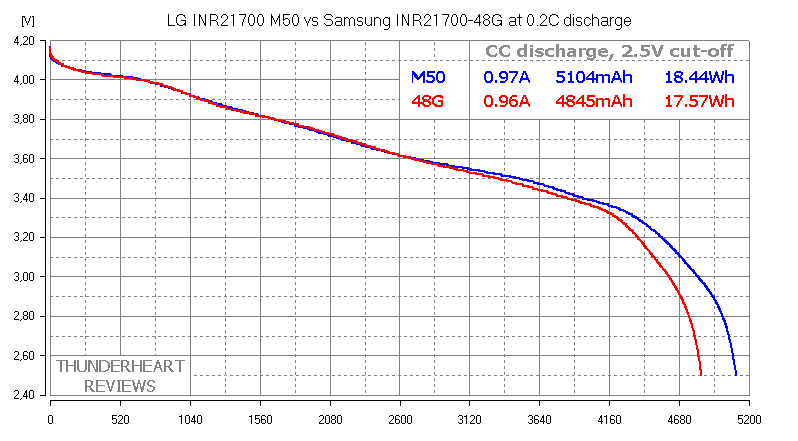
Despite the 0.01A difference in discharge current LG M50 showed better result than the 48G. Pay attention to their curves - they are almost the same during the first half and they look very similar during the second half of discharging. This is because they use the same (or almost the same) chemistry.
At 5A.
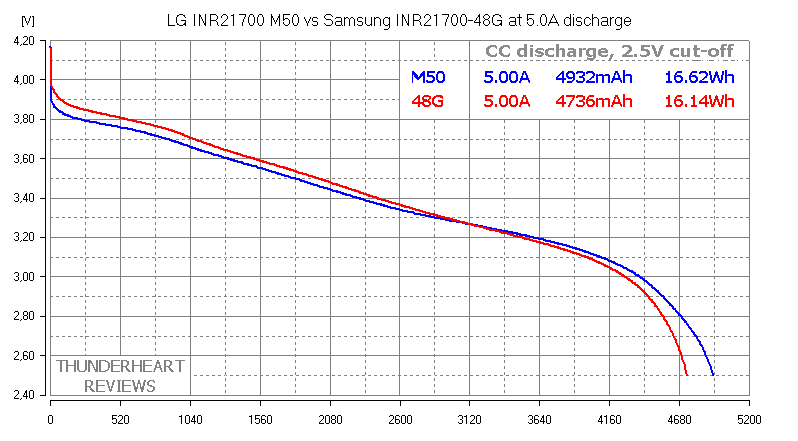
The results are very close, thought the M50 is better again.
At 10A/9.6A.
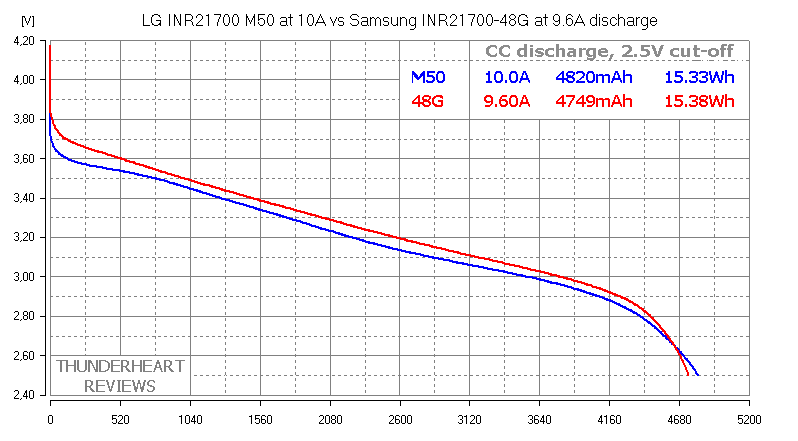
I've discharged the M50 at 10A and the 48G at its maximum allowed 9.6A. Nevertheless the M50 showed higher capacity and almost the same energy in comparison with 48G.
CONCLUSION
Both cells are surprising with their results, but i liked the M50 a bit more than the 48G. I don't understand why did LG limit the max discharge at 7.28A, because it handles 10A easily. Of course the cycle life won't be the same as at 7.28A, but nobody expects a great cycle life at max rates. There is also LG M50 Grade A cell, which was unavailable when i was making the order. Does anybody have any official info about the difference between Grade A and Grade B M50s?
I hope this test was interesting to read/watch and i'll be happy if it was useful for someone Here is the video version of this review with size comparison between 18650, 21700 and 26650 cells:
Here is the video version of this review with size comparison between 18650, 21700 and 26650 cells:
[youtube]KGJDogOG4zw[/youtube]
P.S. this is my YouTube channel: www.youtube.com/thunderheartreviews It will be highly appreciated if you subscribe !
!
The cells i've bought from Queen Battery.
As always, I've tested with ZKETECH EBC-A20 and a self-made battery holder. It's a PC-connected battery tester supporting 4-wire measuring and discharging at up to 20A.


I've followed all the prescriptions of the IEC61960-2003 standard concerning battery's capacity measurement. Before each discharging cycle each battery was charged at standard current mentioned in its datasheet to charge end voltage (4.2V) (cut-off at 0.1A, which is the lowest supported by EBC-A20). Before each discharging or charging i've held a 1-1.5hrs pause. The environment temperature was about 25°C.
LG INR21700 M50 (Grade B)
This cell has absolutely no marking.

The main specs from its datasheet:
Nominal energy: 18.20Wh
Minimum energy: 17.60Wh
Minimum capacity: 4850mAh
Nominal voltage: 3.63V
Standard charge current: 1.455A
Max. charge current: 3.395A
Charge end voltage: 4.2V
Charge cut-off current: 50mA
Max. discharge current: 7.275A
Discharge cut-off voltage: 2.5V
Weight (w/o washer): 68±1g
The measured weight is 69.16g.

Test results:

Great results - 5104mAh/18.44Wh at 0.2C (0.97A) and almost 5000mAh at 5A! Even at 10A, which is way above the declared maximum (7.28A), the M50's curve looks very nice. I think it's a very capable cell and LG shouldn't limit the discharge current by 7,28A.
Samsung INR21700-48G
This guy is marked as INR21700-48G SAMSUNG SDI M5-1.

The main specs from its datasheet:
Typical energy: 17.4Wh
Minimum energy: 17.04Wh
Typical capacity: 4800mAh
Minimum capacity: 4700mAh
Nominal voltage: 3.6V
Standard charge current: 1.44A
Max. charge current: 4.8A
Charge end voltage: 4.2V
Charge cut-off current: 96mA
Max. discharge current: 9.6A
Discharge cut-off voltage: 2.5V
Max weight: 69g
The measured weight is 67.58g.

Test results:

At 0.2C (0.96A) the results are a bit higher than declared. At 5A and 9.6A the 48G showed good results with nice curves.
COMPARISON
At 0.2C.

Despite the 0.01A difference in discharge current LG M50 showed better result than the 48G. Pay attention to their curves - they are almost the same during the first half and they look very similar during the second half of discharging. This is because they use the same (or almost the same) chemistry.
At 5A.

The results are very close, thought the M50 is better again.
At 10A/9.6A.

I've discharged the M50 at 10A and the 48G at its maximum allowed 9.6A. Nevertheless the M50 showed higher capacity and almost the same energy in comparison with 48G.
CONCLUSION
Both cells are surprising with their results, but i liked the M50 a bit more than the 48G. I don't understand why did LG limit the max discharge at 7.28A, because it handles 10A easily. Of course the cycle life won't be the same as at 7.28A, but nobody expects a great cycle life at max rates. There is also LG M50 Grade A cell, which was unavailable when i was making the order. Does anybody have any official info about the difference between Grade A and Grade B M50s?
I hope this test was interesting to read/watch and i'll be happy if it was useful for someone
[youtube]KGJDogOG4zw[/youtube]
P.S. this is my YouTube channel: www.youtube.com/thunderheartreviews It will be highly appreciated if you subscribe

